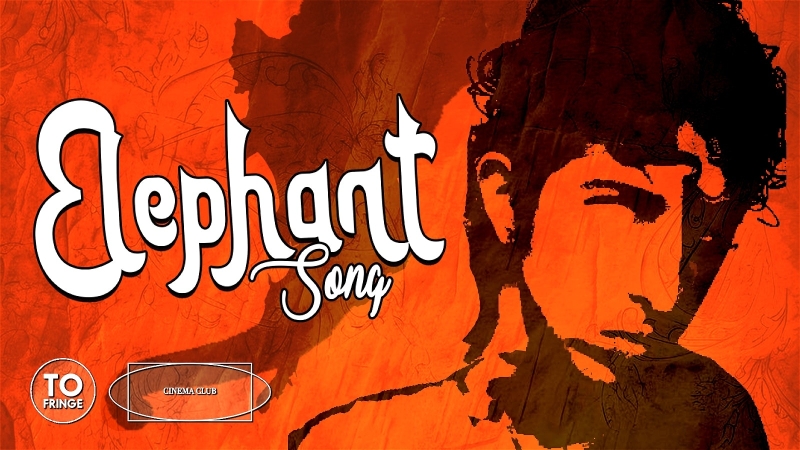Review: TORONTO FRINGE FESTIVAL: DAY 3
Reviews of Colonial Circus, Elephant Song, Daniel In Love (For One Night Only), and Cabaret of Murder


COLONIAL CIRCUS
If you think that 60 minutes is a short time to tell the history of colonization in neo-bouffon clown without cutting some corners, you’re right. Shreya Parashar and Sachin Sharma’s COLONIAL CIRCUS (a clown-exclusive experience; no other circus acts here) features three main scenes that boil history down to the basics: the clown colonizers introduce religion to the “savages,” travel across a treacherous ocean for tea spices and mayonnaise, and infiltrate India to drain its resources.
Parashar and Sharma, directed by Fringe favourite Isaac Kessler, fill the stage with effective physicality and use repetition and call and response with the audience to the fullest in each section, sometimes bringing willing participants on stage to their doom. They also use one of my least favourite devices in audience participation, which is asking the audience to do something and then chiding us for doing it. However, most of the time, they let the audience in on the fun and know just how to work the room.
A short, tonally-jarring coda feels a bit facile after the more thoughtful building of the main sections. While it won’t necessarily give new insight on colonialism, the presentation is a unique and entertaining spin on an important issue, mocking the deeply entrenched practices that have always benefitted some via the oppression of others.
Cover photo of Shreya Parashar and Sachin Sharma by Isaac Meyer
ELEPHANT SONG

CinemaClub’s play is an almost dreamlike coming-of-age story of a young man in Mumbai who wants to become an artist but finds himself instead in his deceased father’s clerical job, paying out pittances to the families of those lost in a tragic accident. One night, he sees a vision of a white elephant, which shakes him out of his complacency and into changing his life. Kush’s poetic text shimmers, accompanied by atmospheric song by Utsav Alok and Dhruv Sodha; a repeated refrain of the smell of “middle class” being like an armpit in rush-hour public transit is evocative and representative of the play’s sensory nature.
Arjun Kalra gives a strong, understated performance as “b,” the young man, with Chirag Motwani stealing some scenes as his outspoken colleague “A”. The collective creates several different locations in the tiny Backspace, but needs to remember that it’s difficult to see actors seated at the front of the stage from the back of the audience, and could use the music to cover a few of the longer stage block changes. The meditative, quiet quality of the work demands close attention from the audience in order not to lose the thread of narrative, particularly near the end, but it’s worth it to pay attention.
Poster image provided by the company
DANIEL IN LOVE (FOR ONE NIGHT ONLY)

I wanted to enjoy DANIEL IN LOVE, I really did. And I’m rooting for star/writer Daniel Tompkins all the way. Unfortunately, an autobiographical solo show needs to do several things to create stage magic, and the short piece in the Tarragon Backspace has a ways to go before delivering on any of them.
Quick tips for solo show writers:
First, be in control of the piece’s trajectory, presenting the audience with heartfelt and emotional entertainment, but not therapy. To connect with the audience, we need to know why we’re listening to these stories. Tompkins has a strong kernel of concept here — how love changed his life — and reads classic poems as connecting tissue between the tales, but the stories are still raw and unfinished: more “things that happened” than theatre.
Second, specific details, ironically, make your stories more universal. The people in your stories evoke strong reactions in you, because you have many memories of them, but your audience doesn’t have that luxury. That means we need you to shade in these phantoms, so we can feel what you feel. Tompkins’ stories of string of women who are devastated to be dumped by him are clearly meaningful to him, but we’re not really let in on why.
Third, always participate in your own journey, so that the audience can come with you. Here, the show starts with an empty stage and a three-minute overture while we wait for something to happen; later, briefly introducing his grandfather’s lovely pet name for his wife, Tompkins plays the entire song that was played at his grandfather’s funeral, sitting and watching the audience for another five minutes. This would be a fantastic opportunity for either an emotional journey to unfold onstage, or a quick fade in and out of the song for the audience to understand the reference and then move forward with the performer.
Tompkins clearly has a story to tell, particularly in his origins as a Catholic teen pregnancy and his unusually strong relationship with his stepfather, who adopted him. The Fringe is an important testing ground for this work in progress.
Photo of Daniel Tompkins by Meg Fitzgerald
CABARET OF MURDER

CABARET OF MURDER combines a talented cast with a fascinating premise: they’re presenting the written art of mass murderers and serial killers from approximately the past hundred years, whether in the form of newspaper announcement, song, short play, film script, or poem. The three-woman cast has a ton of energy, working well with even the most dire offerings. It’s also attention-getting and not a little chilling to hear the unfiltered works, knowing the minds behind them; for example, we hear Lyle Menendez’s script for a movie where a young man kills his parents for their inheritance, written two years before he and his brother murdered their own parents for similar reasons.
The odd part about CABARET OF MURDER is that the pieces are delivered almost without comment. The show takes no artistic viewpoint or philosophical angle on them and makes no statement about them, other than making fun of a few of the least polished and most disturbing pieces, or speaking a little about how it’s important to remember the victims. This means that the show, while entertaining and performed well, feels lacking in cohesion. I wanted to know more about the purpose of presenting these oddities, other than to marvel that they exist.
In the show’s best moment, the cast sings a song later revealed to be by Waco cult leader David Koresh and accompanied by a lengthier explanation than most; the song is catchy and becomes a singalong, with most of the audience happily participating and falling under its spell. For a moment, we think about what role art has in propaganda — but then, the moment is gone.
Photo of Bella Ciccone, Katie-Rose Connors, and Paulina Pino Rubio by Ian Redd, Marcee Rae Photography, and Mat Lo Photography
Reader Reviews
Videos

